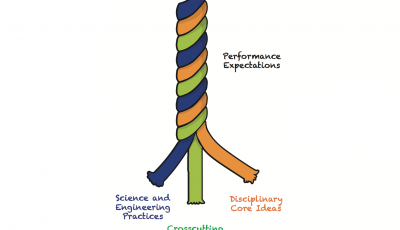Smithsonian Science for the Classroom

Smithsonian Science for the Classroom is the only high-quality curriculum proven to raise standardized test scores in science, reading, and math. These results are based on a rigorous independent 5-year study. It is designed to engage students in phenomenon- and problem-driven learning that connects students firsthand to the world around them. It was developed in consultation with teachers and content experts and was field tested in a range of schools with diverse populations. It draws on the latest findings and best practices from education research and supports teachers with point-of-use support.
Smithsonian Science for the Classroom has been rated all-green by EdReports. Read the K-2 and 3-5 reviews on EdReports. Read the K-2 review on EdReports. Read the 3-5 review on EdReports.
For decades, the Smithsonian Science Education Center has been a leader in providing curriculum, professional development, and leadership development in support of inquiry-based science education.
Smithsonian Science for the Classroom is developed to:
- meet the Next Generation Science Standards
- be educative for teachers as they learn to implement 3D standards
- incorporate findings from education research on how students learn
- follow a coherent storyline to explain phenomena and design solutions to problems
- broaden access to world-class Smithsonian collections, experts, and resources
- include instructional supports to ensure all students can meet the standards
- incorporate a comprehensive assessment system to monitor student progress
Features of Smithsonian Science for the Classroom
Resources for Current Smithsonian Science for the Classroom Users
Curriculum Framework
Smithsonian Science for the Classroom is designed to be a comprehensive core science program for grades K–5. We organized the NGSS Performance Expectations (PEs) into four “bundles” that correspond to four modules per grade. If all four modules are used within the year, then students should be prepared to meet all the NGSS PEs at that grade level. Within a grade level, the modules may be used in any sequence.
The modules are organized into four topical “strands”: life science, earth and space science, physical science, and engineering design. There is one module in each strand per grade level. While the strands serve as organizing themes, the modules themselves are interdisciplinary and always include PEs from at least one topic besides the designated strand.
Crucially, all modules in the engineering design strand also include science PEs—many of which are only covered within the engineering modules. The intent of the NGSS is for students to learn science and engineering in an integrated way that reflects the real-world practices of scientists and engineers. Our program honors this intent by never treating engineering design in isolation from the scientific knowledge it is based on.
The module titles are all phrased as questions to motivate students and tie together the concepts within the module’s PE bundle. The questions for the life science, earth and space science, and physical science modules invite students to construct scientific explanations for natural phenomena, while the questions for the engineering design modules invite students to design solutions to practical problems. All modules have a culminating challenge—a science challenge or design challenge, depending on the strand—that serves as a performance assessment.














